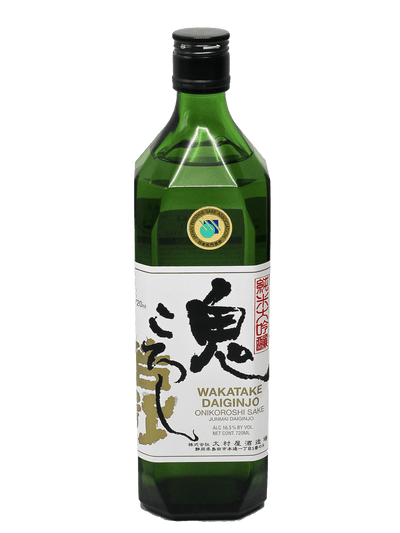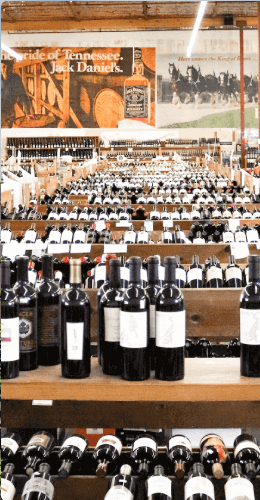Sipping Southern Terroir: The Rise of Texas Wine in the US

Yes, the best wine store USA is located in beautiful Sonoma County, California; but Bottle Barn likes to celebrate diverse wines from across the country. When it comes to American wine, regions like Napa or Sonoma and the Willamette Valley in Oregon often steal the spotlight. However, in recent years, a new player has been making waves in the world of viticulture – Texas. The Lone Star State's wine industry has experienced a remarkable transformation, transitioning from an obscure player to a serious contender in the American wine scene. Featuring a unique blend of climate, soil, and pioneering spirit, the rise of Texas wine has recently come to captivate both enthusiasts and experts alike.
A Thriving Terroir
Texas' diverse geography and climate have provided fertile ground for cultivating grapes that yield distinctive wines. The state's vast size encompasses a range of microclimates, from the warm and arid conditions in the western part of the state to the more temperate climates in the east. This diversity allows Texan winemakers to experiment with a wide variety of grape varietals, each adapting to its respective terroir. The Texas Wine and Grape Growers Association notes: “The sunny and dry climate of the major winemaking regions in the state have drawn a comparison to Portuguese wines.” In the Texas Hill Country AVA (American Viticultural Area), the warm days and cool nights create a favorable environment for grape cultivation. Mediterranean grape varieties such as Tempranillo and Viognier have thrived here, producing wines with unique expressions that reflect the region's distinct characteristics.
One of the driving forces behind the rise of Texas wine is the community of passionate and innovative winemakers. There’s even a Texas Wine Trail in the Hill Country. These trailblazers have shown an unwavering commitment to producing high-quality wines that rival those from more established regions when people order wine delivery.
Wineries like Becker Vineyards, established in the 1990s, have played a pivotal role in proving that Texas has the potential to produce world-class wines. Not only did they introduce lesser-known grape varietals to the Texan terroir, but they also demonstrated that quality could be achieved through careful vineyard management and skillful winemaking techniques.
Embracing Local Grape Varietals
While international grape varieties have found success in Texas, the state's winemakers are also exploring their own local grape species. The Lenoir grape, also known as Black Spanish, has been cultivated in Texas for over a century. Once primarily used to produce table wines, Lenoir is now being utilized to craft exceptional red wines that showcase the Texan spirit.
The rise of Texas wine is not only about embracing the new but also about preserving tradition. Many Texan winemakers combine modern technology with traditional winemaking methods to create wines that respect the past while looking toward the future. For instance, the use of underground cellars for aging wines is a nod to the historical wine production methods. These cellars provide a natural and consistent temperature and humidity, creating an ideal environment for the maturation of wines. This integration of old and new techniques is emblematic of the Texan wine industry's commitment to crafting exceptional wines.
As Texas winemakers continue to push the boundaries, their efforts are receiving recognition on a national level. Texan wines have gained prestigious awards and accolades from prominent competitions, further solidifying their place in the American wine landscape. Beyond the accolades, the rise of Texas wine has also had a significant economic impact, and you may find it in your favorite wine store. The industry has created jobs and boosted tourism, as wine enthusiasts flock to Texas to experience its unique wine culture firsthand. Wineries, tasting rooms, and vineyard tours offer visitors a chance to immerse themselves in the winemaking process and enjoy the stunning landscapes that Texas has to offer.
Challenges and Future Prospects
While the ascent of Texas wine is undeniable, the industry still faces its share of challenges. The state's unpredictable weather patterns, including severe storms and droughts, can impact grape yields and overall wine production. Climate change is always an issue, in Texas as in California. Additionally, raising awareness and educating consumers about Texan wines remains an ongoing effort to cause people to buy wine. Looking to the future, the Texas wine industry shows promise as winemakers continue to refine their techniques and explore new possibilities. The region's potential to produce unique and high-quality wines is attracting both investment and talent, ensuring that the Texas wine story has just commenced.
The rise of Texas wine in the US forms a testament to the power of perseverance, innovation, and the pursuit of excellence. With its diverse terroir, passionate winemakers, and commitment to tradition, the Lone Star State has firmly established itself as a player to watch in the American wine scene. As Texan wines gain recognition and admirers across the country, it's clear that the story of Texas wine is no longer a local secret, but a national success story worth raising a glass to. Be sure to check out the diverse wine offerings of the best online wine store with Bottle Barn’s easy-to-use search function!


















Leave a comment